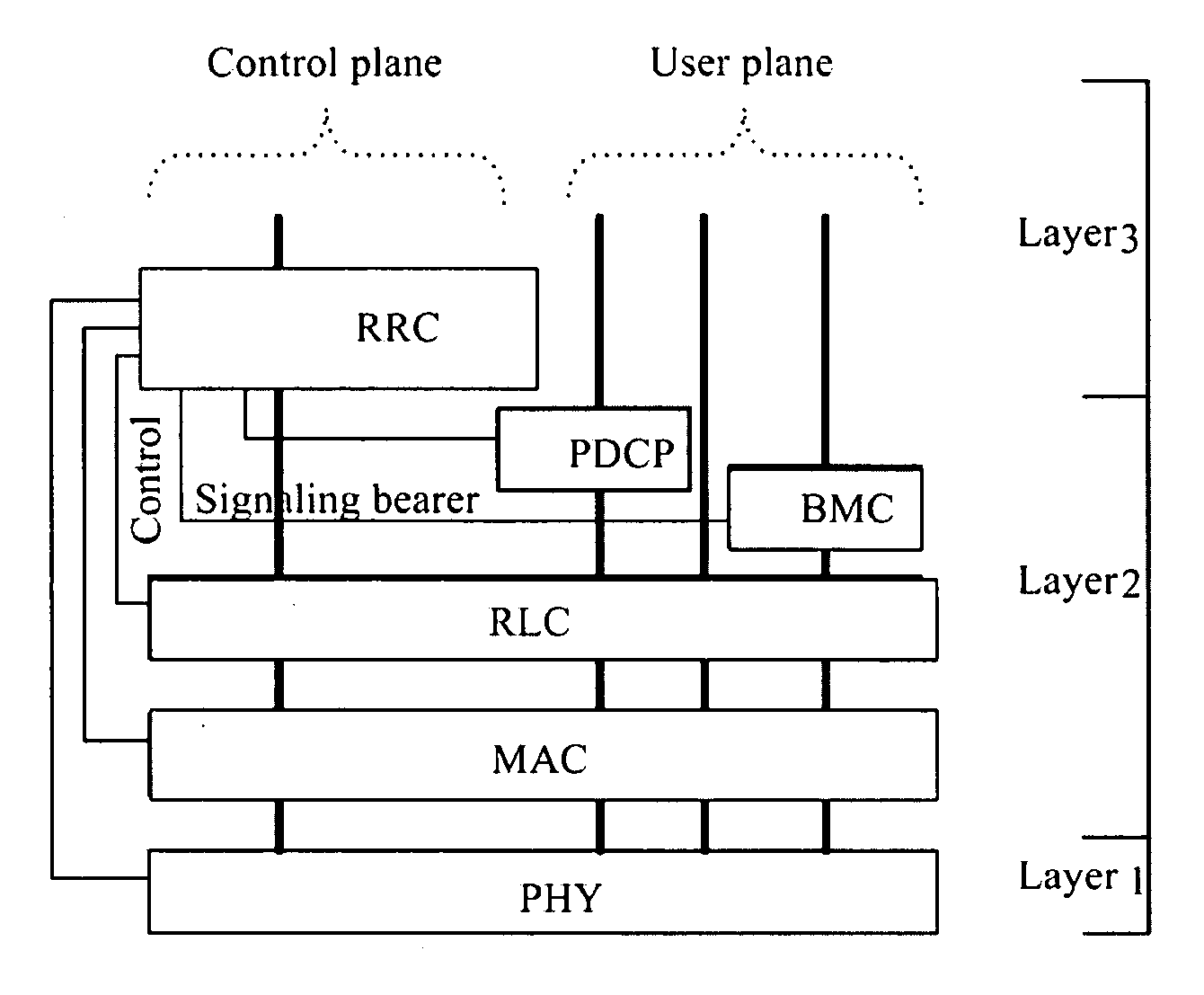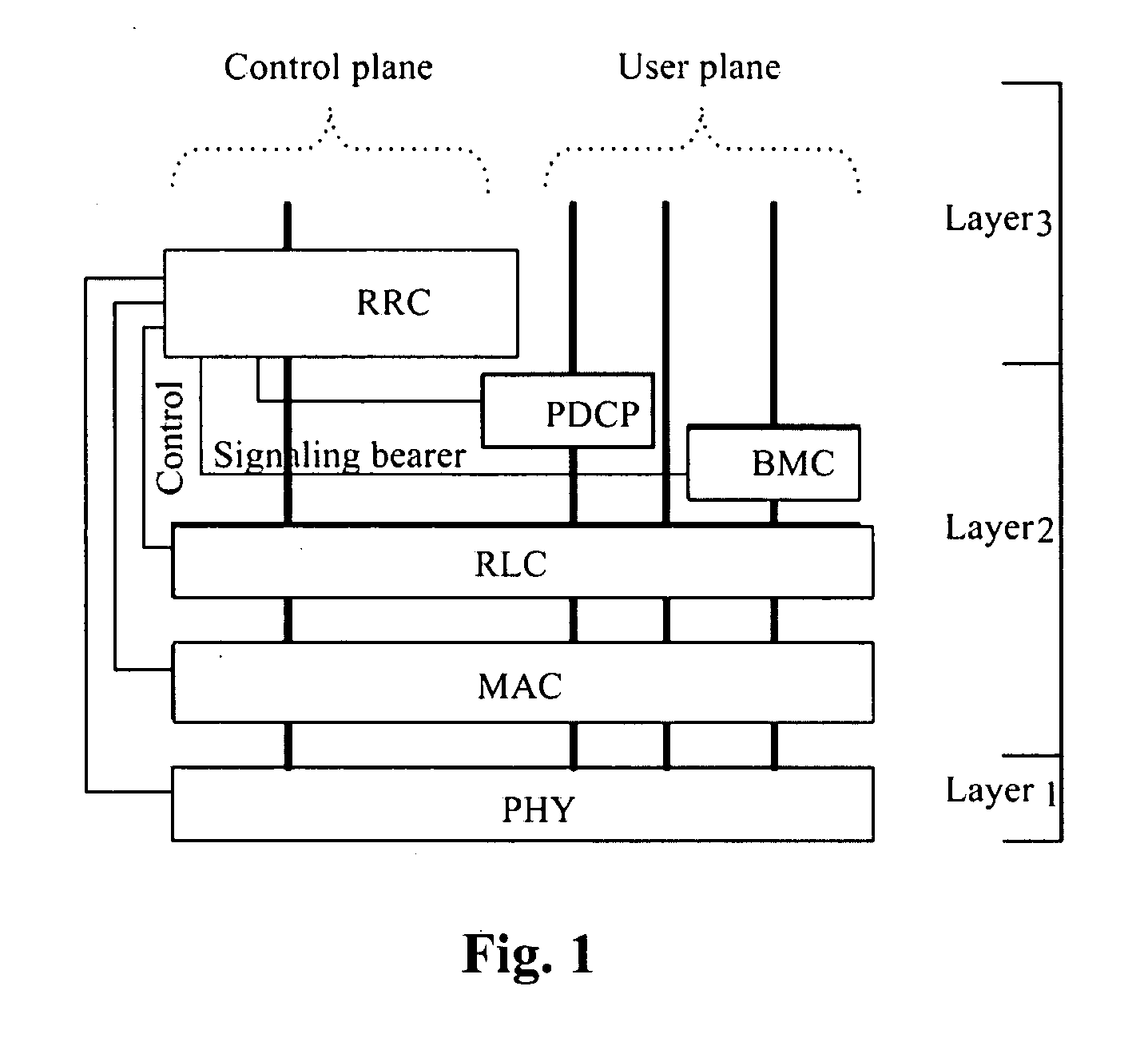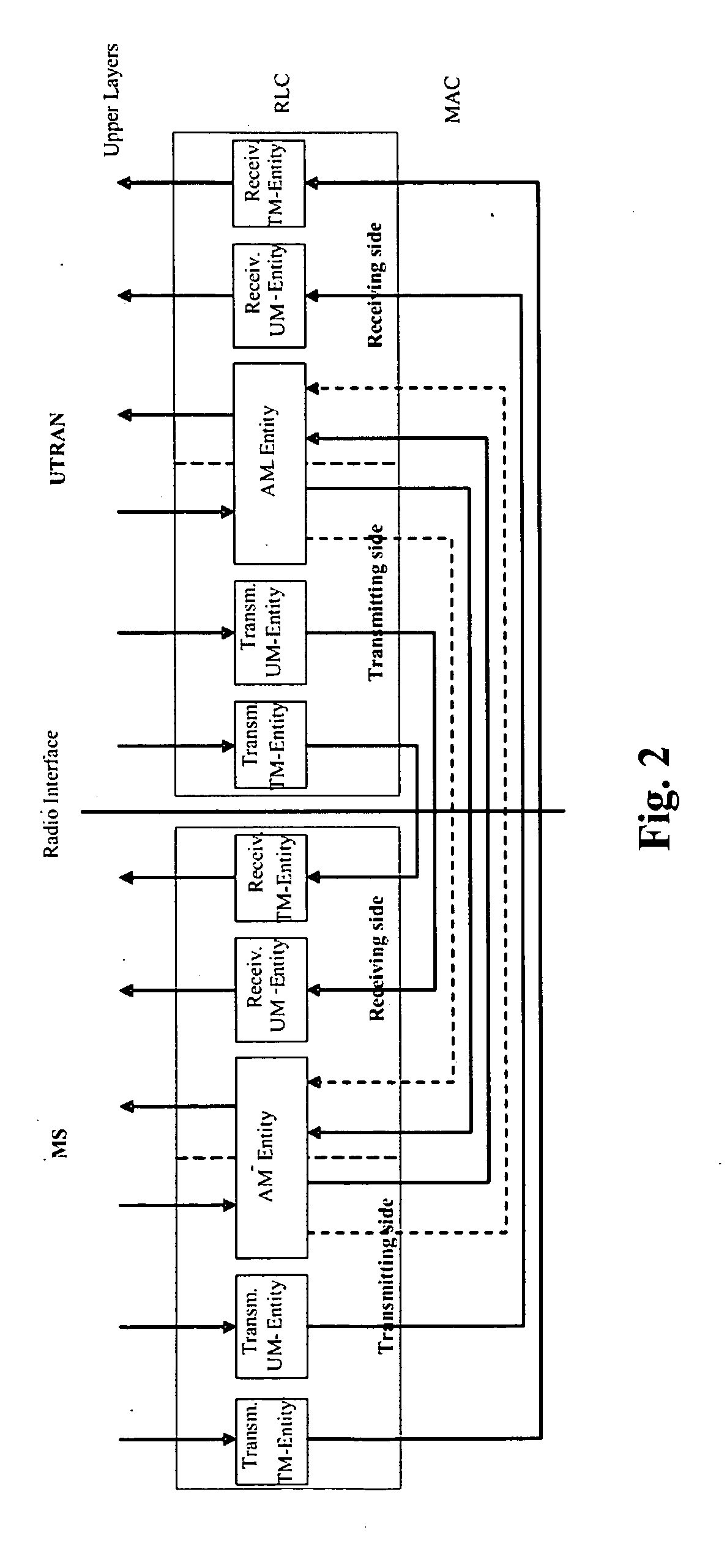Method and device for reordering data in wireless communication system
- Summary
- Abstract
- Description
- Claims
- Application Information
AI Technical Summary
Benefits of technology
Problems solved by technology
Method used
Image
Examples
embodiment 1
[0105]When a PDU with SN=x is received, the following steps are executed (the step numbers can indicate the execution order or not).
[0106]Step 1: If x falls into (Next_expected_SN, Highest_received_SN) and the data corresponding to the SN already exists in the buffer, then the data is deleted; if x is beyond (Next_expected_SN, Highest_received_SN), then the PDU is put into the buffer according to the SN.
[0107]Step 2: If x>Highest_received_SN, if x−HARQ_RcvWindow_Size−Next_expected_SN>ARQ_RcvWindow_Size, then {
[0108]a new data transmission suspension message is sent to the transmitting side, and the ARQ window is updated to (Next_expected_SN, Next_expected_SN+ARQ_RcvWindow_Size);
[0109]the PDUs with SN ranging from Next_expected_SN+ARQ_RcvWindow_Size to Highest_received_SN−HARQ_RcvWindow_Size are deleted;
[0110]a state report is triggered under a state report triggering rule; Highest_received_SN is updated to x;}
[0111]else { missing PDUs from Highest_received_SN−HARQ_RcvWindow_Size to ...
embodiment 2
[0117]When a PDU with an SN=x is received, the following steps are executed (the step numbers can indicate the execution order or not).
[0118]Step 1: if x falls into (Next_expected_SN, Highest_received_SN), then {
[0119]if the data corresponding to the SN already exists in the buffer, then the data is deleted;
[0120]else the PDU is put into the buffer according to the SN}.
[0121]Step 2: if x>Highest_received_SN, then {
[0122]Highest_received_SN is updated to x;
[0123]whether x−HARQ_RcvWindow_Edge>HARQ_RcvWindow_Size is checked; if x−HARQ_RcvWindow_Edge>HARQ_RcvWindow_Size, HARQ_RcvWindow_Edge is updated to x−HARQ_RcvWindow_Size}.
[0124]Step 3: if the PDU with an SN=HARQ_RcvWindow_Edge exists in the buffer, then {
[0125]whether there is any PDU with an SN consecutive to the SN of the above PDU in the buffer is checked, and HARQ_RcvWindow_Edge is updated to the lowest SN among the non-consecutive SNs of PDUs}.
[0126]Step 4: a state report is triggered according to the updated HARQ_RcvWindow_Ed...
embodiment 3
[0143]When a PDU with an SN=x is received, the following steps are executed (the step numbers can indicate the execution order or not).
[0144]In step 1, the timer Timer_Rcv is triggered;
[0145]In step 2, if the SN corresponding to the timer is y when the timer times out, then {
[0146]if the state variable HARQ_RcvWindow_Edge_T is not activated, then HARQ_RcvWindow_Edge_T is set to y;
[0147]else if HARQ_RcvWindow_Edge_T
[0148]In step 3, if a PDU with an SN y=Next_expected_SN is received, then {
[0149]whether there is any PDU with an SN consecutive to the Next_expected_SN is checked;
[0150]Next_expected_SN is updated to the SN of the first PDU that has not been received starting from x;
[0151]all timers corresponding to SN
[0152]In step 4, HARQ_RcvWindow_Edge_T is updated, and a corresponding state report is triggered under the state report triggering rule;
[0153]In step 5, if HARQ_RcvWindow_Edge_T−Next_expected_SN>A...
PUM
 Login to View More
Login to View More Abstract
Description
Claims
Application Information
 Login to View More
Login to View More - R&D
- Intellectual Property
- Life Sciences
- Materials
- Tech Scout
- Unparalleled Data Quality
- Higher Quality Content
- 60% Fewer Hallucinations
Browse by: Latest US Patents, China's latest patents, Technical Efficacy Thesaurus, Application Domain, Technology Topic, Popular Technical Reports.
© 2025 PatSnap. All rights reserved.Legal|Privacy policy|Modern Slavery Act Transparency Statement|Sitemap|About US| Contact US: help@patsnap.com



